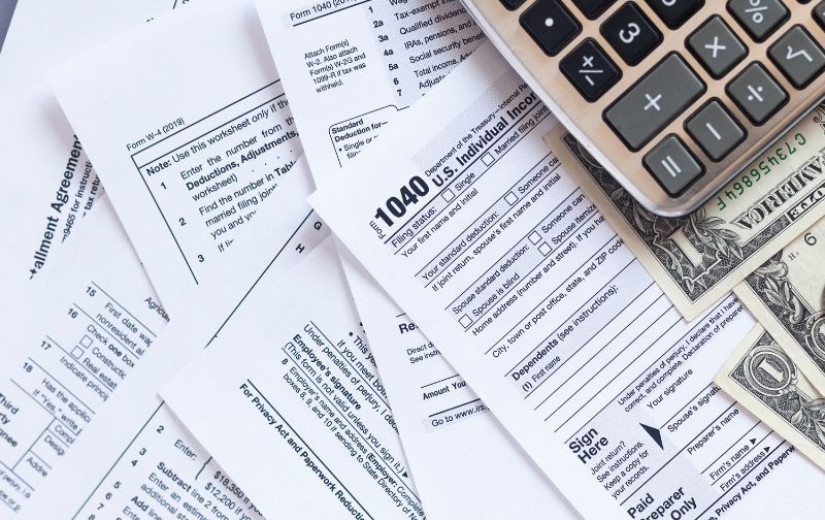
Cutting waste in endoscopy: a multicentre observational study in the German healthcare system
- Lukas Welsch1,
- Mireen Friedrich-Rust2,
- Andrea Tal3,
- Norbert Haider4,
- Sarah Kim1,2,
- Maximilian Schneider3,
- Laura Schmitt3,
- Lisa Wittersheim4,
- Sabine Schmitt1,
- Alica Heide2,
- Myriam Heilani2,
- Stefan Zeuzem2,
- Axel Eickhoff1,
- http://orcid.org/0000-0002-9305-3691Florian Alexander Michael2
- 1Department of Gastroenterology, Diabetology and Infectiology, Klinikum Hanau, Hanau, Germany
- 2Goethe University Frankfurt, University Hospital, Medical Clinic 1, Frankfurt, Germany
- 3Internistische Praxisgemeinschaft Hanau, Hanau, Germany
- 4Magen-Darm-Zentrum Darmstadt, Darmstadt, Germany
- Correspondence to Dr Florian Alexander Michael; flori-michael{at}web.de
Abstract
Background Endoscopic procedures are a notable source of medical waste, contributing significantly to environmental pollution. Prior studies report 0.5–3.0 kg of waste per procedure—compared with just 1.2 kg of household waste generated per person per day in Germany.
Objective To quantify endoscopic waste in hospitals and outpatient settings, assess its impact on the healthcare system and identify strategies for reduction.
Design This prospective, multicentre, observational study was conducted over 4 weeks in two tertiary hospitals and two gastroenterology offices. Waste from 2275 patients across 2889 procedures was collected, sorted, weighed and categorised for recyclability. National waste generation from GI endoscopy was estimated using published insurance data.
Results The average waste per procedure was 1119 g (hospitals: 1167 g; offices: 1094 g). Office-based procedures produced significantly less waste than their hospital counterparts—by 51% for oesophagogastroduodenoscopy (EGD), 50% for colonoscopy, 47% for combined procedures and 69% for sigmoidoscopy (all p<0.001). Performing consecutive procedures reduced waste by up to 39% for EGD and colonoscopy, and 33% for endoscopic ultrasound and endoscopic retrograde cholangiopancreatography. Switching from single-use to reusable gowns could reduce personal protective equipment waste by 54%. Overall, 23% of waste was potentially recyclable. Nationally, GI endoscopy generates an estimated 8024 tonnes of waste annually—equivalent to the yearly household waste of 18 533 German citizens.
Conclusion The waste generated by endoscopy per year in Germany rivals that of a small town. Adopting targeted waste reduction strategies—focusing on prevention, reduction, reuse, recycling and recovery—can substantially mitigate the environmental footprint of endoscopic practice.
- ENDOSCOPY
- ENVIRONMENTAL HEALTH
- HEALTH SERVICE RESEARCH
- DIAGNOSTIC AND THERAPEUTIC ENDOSCOPY
Data availability statement
Data are available upon reasonable request.
http://creativecommons.org/licenses/by-nc/4.0/
This is an open access article distributed in accordance with the Creative Commons Attribution Non Commercial (CC BY-NC 4.0) license, which permits others to distribute, remix, adapt, build upon this work non-commercially, and license their derivative works on different terms, provided the original work is properly cited, appropriate credit is given, any changes made indicated, and the use is non-commercial. See: http://creativecommons.org/licenses/by-nc/4.0/.
Statistics from Altmetric.com
Request Permissions
If you wish to reuse any or all of this article please use the link below which will take you to the Copyright Clearance Center’s RightsLink service. You will be able to get a quick price and instant permission to reuse the content in many different ways.
WHAT IS ALREADY KNOWN ON THIS TOPIC
Endoscopic procedures are a major contributor to healthcare-related waste, ranking as the third largest source within the sector, with approximately 3 kg of waste generated per patient bed per day, thereby contributing to environmental harm and climate change.
Reliable data are lacking on waste generation across different types of endoscopic procedures, comparisons between hospitals and outpatient settings and the effectiveness of validated waste reduction strategies beyond basic recycling.
WHAT THIS STUDY ADDS
German waste classification (by procedure weight):
Low (<0.5 kg): oesophagogastroduodenoscopy, colonoscopy, sigmoidoscopy.
Intermediate (0.5–1.5 kg): endoscopic ultrasound, percutaneous endoscopic gastrostomy, double-balloon enteroscopy.
High (>1.5 kg): endoscopic retrograde cholangiopancreatography.
Waste reduction strategies:
Office-based procedures produce less waste than hospital-based ones.
Combining procedures reduces waste by up to 39%.
Suction bags (36% of waste) could be processed via sewage.
Reusable gowns cut personal protective equipment waste by 54%.
Recycling potential:
GI endoscopy generates ~8024 tonnes/year; 23% is recyclable.
HOW THIS STUDY MIGHT AFFECT RESEARCH, PRACTICE OR POLICY
Results support implementing comprehensive waste reduction strategies.
Shifting to office-based endoscopy may lower waste generation.
Future research should address data consistency across institutions and systems.
Introduction
Human-induced climate change is already causing numerous deaths, a toll expected to rise significantly in coming decades.1–3 In response, the 2015 Paris Climate Agreement set political targets to limit global warming and reduce pollution. Healthcare contributes an average of 5.6% of global greenhouse gas emissions, primarily due to high energy use.4 5 In Germany, the sector’s carbon footprint is higher at 6.7%.5 Within healthcare, endoscopy ranks as the third largest waste generator, producing around 3 kg of waste per patient bed per day.6
Endoscopy societies have addressed sustainability, recommending strategies like reduce, reuse and recycle programmes.7–12 Published data currently assume approximately 0.5–3.0 kg of waste per GI endoscopy.13–18 This study aimed to quantify waste from various endoscopic procedures in hospitals and offices, assess the influence of procedural setting and identify practical, evidence-based strategies to reduce waste across healthcare systems.
Materials and methods
This prospective observational study was conducted at a university hospital (University Hospital Frankfurt), a tertiary hospital (Klinikum Hanau) and two independent office-based endoscopy units (Internistische Praxisgemeinschaft Hanau and Magen-Darm-Zentrum Darmstadt, Germany). The study was registered at ClinicalTrials.gov (NCT05921136). No external funding or material support was received, and the authors report no conflicts of interest.
Study design
The two hospitals were categorised as hospital-based endoscopy units and the others as office-based units. At each site, all GI endoscopy unit waste was collected over four regular working weeks. Procedures outside the endoscopy units (eg, emergency room or intensive care unit) were excluded. Waste was recorded per patient in the examination room. Consecutive procedures (eg, oesophagogastroduodenoscopy (EGD) and colonoscopy or endoscopic retrograde cholangiopancreatography (ERCP) following endoscopic ultrasound (EUS)) were counted as a single procedure to assess the impact of combined versus separate examinations. Procedure type and indication were documented.
Waste from each procedure was collected in a single plastic bag and categorised into five groups: (1) devices (eg, forceps, snares), (2) personal protective equipment (PPE), (3) plastic, (4) paper and (5) residual waste—non-recyclable items not fitting other categories (see figure 1). Plastic and paper were labelled as recyclable only if free of biological or liquid contamination; otherwise, they were classified as residual waste. The same individual at all centres sorted and weighed the waste using a DE 6K0.5A scale (KERN & SOHN, Germany), with measurements recorded in grams. Sharps and glass were placed in safety containers and counted as residual waste daily. For patients with documented infectious diseases (eg, multidrug resistant bacteria, tuberculosis, HIV, hepatitis B/C), all waste was classified as residual due to contamination risk. No additional screening or SARS-CoV-2 testing was performed.
Figure 1
Graphical overview of the study-based collection of endoscopic waste generation and allocation during the study period. PPE, personal protective equipment; RW, residual waste.
Waste from areas outside the endoscopy room was collected and evaluated daily, then calculated per patient and procedure. Assessment covered three areas: (1) postprocedural care (including packaging), (2) reprocessing area and (3) suction bags (classified as residual waste). Patient waiting areas, staff break rooms and water or energy use were not evaluated. Prior to the study, none of the participating units had a formal waste separation system in place.
To estimate total waste and recycling potential in Germany, calculations used 2021 insurance data on the number of endoscopies performed in hospitals and offices.19 For comparison, we included detailed data on procedure indications (online supplemental table 1) and annual endoscopy volumes per centre (online supplemental table 2). Extrapolations accounted for both procedure types and care settings.
Supplemental material
Greenhouse gas emissions were estimated using 2018 European Union (EU) and UK emission factors for CO₂ from waste processing20 21 and reported in carbon dioxide equivalents (CO₂e). Emission factors applied were: (1) 0.489 tonne CO₂e per tonne of residual waste, (2) –1.024 tonne CO₂e per tonne of recycled plastic and (3) –0.124 tonne CO₂e per tonne of recycled paper/cardboard. CO₂e was calculated as: CO2e=emission factor×waste (kg).
For context, endoscopy-related waste was compared with Germany’s 2023 average of 433 kg of waste per person annually (1.19 kg/day).22 CO₂e emissions per endoscopy were benchmarked against two references: a new average EU passenger car in 2023 (116.3 g CO₂/km)23 and an intercontinental economy class flight from Frankfurt to New York (0.925 tonne CO₂).24
Statistics
Data documentation was performed using Excel V.2410 (Microsoft, Redmond, USA). Statistical analysis was performed using IBM (International Business Machines) SPSS Statistics V.25 (IBM). Descriptive statistics are presented using sum, mean and corresponding SD. Intergroup differences of values between hospitals and offices and between the individual centres were assessed using the Wilcoxon-Mann-Whitney U test. A two-sided p value <0.05 was considered statistically significant. To compare groups, relationships were expressed in absolute values and percentages.
Results
The study was conducted from July to October 2023, documenting 2889 procedures in 2275 patients over 78 working days. Hospitals accounted for 937 procedures (32%) in 790 patients (35%) across 38 days (49%), while offices performed 1952 procedures (68%) in 1485 patients (65%) over 40 days (51%). Three centres had 20 working days; University Hospital Frankfurt had 18 due to two national holidays. Online supplemental table 2 shows annual procedure volumes for 2023; table 1 summarises procedure types and number per centre; online supplemental table 1 lists procedure indications; and online supplemental table 3 details procedures involving known infectious diseases.
Table 1
Overview of procedure type and numbers per participating endoscopy unit
Waste generation
A total of 2558 kg of waste was collected during the study period—923 kg (36%) in hospitals and 1626 kg (64%) in offices. Based on online supplemental tables 4 and 5, 73% of waste (77% in hospitals, 71% in offices) originated in the examination room. Procedure-related waste made up 37% of total waste (55% in hospitals, 27% in offices), and suction bags accounted for 36% (22% in hospitals, 44% in offices). The reprocessing area contributed 14% (12% in hospitals, 14% in offices) and the postprocedural care unit 13% (11% in hospitals, 14% in offices).
On average, each endoscopic procedure generated 1119 g of waste (1167 g in hospitals; 1094 g in offices). Waste per procedure by area: examination room 415 g (647 g in hospitals; 292 g in offices), suction bags 405 g (255 g in hospitals; 485 g in offices), reprocessing area 156 g (141 g in hospitals; 164 g in offices) and postprocedural care 144 g (124 g in hospitals; 153 g in offices).
Figure 2 shows waste distribution across five categories: residual waste, devices, PPE, recyclable plastic and paper. Figure 3 illustrates average waste amounts by procedure type. Procedures fall into German waste classifications: low waste (<0.5 kg)—EGD, colonoscopy, sigmoidoscopy; intermediate (0.5–1.5 kg)—EUS, percutaneous endoscopic gastrostomy (PEG), double-balloon enteroscopy; high (>1.5 kg)—ERCP.
Figure 2
Pie charts illustrating the distribution of the five waste categories overall and in the two different localisations.
Figure 3
Bar chart of the total amount of waste generation and the five waste categories depending on the type of procedure. EGD, oesophagogastroduodenoscopy; ERCP, endoscopic retrograde cholangiopancreatography; EUS, endoscopic ultrasound; PEG, percutaneous endoscopic gastrostomy.
Waste reduction potential
The study found significantly lower waste generation in offices compared with hospitals for several procedures: EGD (−51%), colonoscopy (−50%), combined EGD and colonoscopy (−47%) and sigmoidoscopy (−69%) (all p<0.001; see online supplemental table 4, figure 4). Combining procedures also reduced waste: EGD and colonoscopy together generated 1283 g vs 2111 g separately (−39%), and combined EUS and ERCP produced 2543 g vs 3741 g (−33%). Comparing reusable gowns (university hospital) with single-use gowns (tertiary hospital) showed a 54% waste reduction (p<0.001; table 2). A recycling programme for plastic and paper could cut residual waste by 23% overall—24% in hospitals and 21% in offices (figure 2).
Figure 4
Box plots comparing the average waste generation between hospital and office-based endoscopy units related to the respective type of procedure. EGD, oesophagogastroduodenoscopy.
Table 2
Comparison of waste amount in personal protection equipment using reusable or single-use gowns in hospitals
Extrapolation to the German healthcare system
Each endoscopic procedure generated ~1119 g of waste—comparable to the daily waste of one German citizen—and 547 g CO₂e, equivalent to driving ~5 km in a passenger car. Online supplemental tables 6 and 7 detail waste estimates across hospitals, offices and nationally. Annually, German gastrointestinal endoscopies produced 8024 tonnes of waste (53% from hospitals, 47% from offices), of which 1830 tonnes were potentially recyclable (59% hospital, 41% office). This total waste is equivalent to the annual waste produced by ~18 533 German citizens and 3924 tonnes of CO₂e—comparable to 33.7 million kilometres driven by car or 4242 economy flights from Frankfurt to New York. With a 23% recycling rate, waste could be reduced by an amount equivalent to annual waste of 3616 citizens and 1427 tonnes of CO₂e—equivalent to 12.3 million kilometres driven by car or 1542 economy flights of the same route.
Discussion
This multicentre observational study quantified waste generation and composition during endoscopic procedures to inform evidence-based waste management strategies. For the first time, both hospital and office-based units were assessed within a single study, allowing system-wide extrapolation. The study provides novel quantitative data to support targeted waste reduction approaches that go beyond basic recycling, incorporating organisational measures. This is essential, as endoscopy remains one of the largest waste producers in healthcare,6 yet comprehensive waste strategies are still lacking.
On 19 November 2008, the European Parliament and Council adopted Directive 2008/98/EC, establishing a comprehensive waste management framework.20 Central to this is the ‘waste hierarchy’, which ranks strategies from most to least environmentally preferred: prevention, reduction, reuse, recycling, recovery and, finally, disposal. The European Society of Gastrointestinal Endoscopy supports this approach, recommending a ‘reduce, reuse, recycle’ programme.12 However, prior guidance was largely theoretical due to limited data. This study provides quantifiable evidence to support practical, evidence-based waste reduction strategies in healthcare.
Our study found an average waste generation of 1.1 kg per endoscopic procedure, notably lower than the 2.1–3.03 kg reported in US studies.14 25 The higher US values reflect its healthcare system’s heavy reliance on disposables and high waste per hospital bed.25 These global differences suggest that healthcare systems, cultural norms and economic incentives significantly influence waste levels.18 Our findings align with this global variation and suggest that regional healthcare structures, cultural factors and economic incentives play a critical role in determining waste levels.25 Based on waste mass, procedures were categorised as: (1) low waste (<0.5 kg: EGD, colonoscopy, sigmoidoscopy), (2) intermediate (0.5–1.5 kg: EUS, PEG, double-balloon enteroscopy) and (3) high (>1.5 kg: ERCP).
We identified several effective waste reduction measures:
Reduce: Performing similar procedures in office settings reduced solid waste by up to 69% compared with hospitals, likely due to greater economic pressures driving resource efficiency. When clinically appropriate, such procedures should be shifted to office-based settings.
A key finding was that suction bags accounted for 36% of total waste—21% in hospitals and 44% in offices. This higher proportion in offices contributed substantially to their overall waste. In Germany, suction bags are classified as infectious waste,26 requiring special disposal and producing triple the CO₂ emissions of municipal waste.6 13 27 In contrast, countries like the USA allow disposal of suctioned fluids via the sewage system, which is considered safe and effective.28 Given that patients already use the sewage system for bowel prep, adopting this method could reduce total waste by up to one-third. Our data also show that combining procedures (eg, EUS with ERCP or EGD with colonoscopy) significantly reduces waste.
Reuse: Introducing reusable gowns reduced PPE waste by over 50% during the study period compared with disposable gowns. Over their full life cycle, reusable gowns can reduce waste by up to 93% and greenhouse gas emissions by two-thirds.29 Despite one hospital using reusable gowns, hospitals still produced significantly more PPE waste than offices—likely due to larger staff numbers required for teaching and complex case management. Additionally, institutional policies and resource allocation may influence PPE usage patterns across settings.
Recycle: Recycling and reuse programmes are essential to reduce the environmental impact of unavoidable waste. Our study identified a 23% recycling potential, consistent with prior findings of 15–35%.13 14 18 27 For simplicity, only plastic and paper were classified as recyclable, though other materials—including some devices—may also be recyclable. Future efforts should assess the recovery potential of additional valuable resources currently being discarded.
Our study did not compare waste generation between different endoscopists performing the same procedure. However, varying clinical practices can result in different amounts of waste even for identical procedures. This variation is evident in our data, where substantial differences in waste quantities were observed for comparable procedures performed at similar locations (hospitals or offices), as demonstrated by the SDs shown in online supplemental table 4.
While our study has several strengths—including a representative patient sample across hospitals and offices, detailed procedure-level waste analysis and national waste impact estimates—some limitations should be acknowledged. It was conducted at two tertiary hospitals and two offices, which may limit generalisability. Nevertheless, findings are likely applicable to other healthcare settings in industrialised countries and offer valuable insights into waste reduction potential. Although common GI procedures were evaluated, some had small sample sizes, which should be considered when interpreting those results. The study focused on downstream waste and did not assess water or energy use, production emissions or travel. While waste reduction measures can be implemented immediately, current German regulations, such as restrictions on disposing of suction fluids via sewage, limit some options.
In conclusion, this study offers important insights into waste generation in endoscopy units and is the first to provide large-scale data supporting a comprehensive waste reduction approach beyond basic recycling. Key strategies include: (1) prioritising office-based settings for routine procedures, (2) combining procedures when appropriate, (3) choosing ecologically favourable procedures when possible, (4) adopting PPE reuse programmes and (5) initiating recycling for the 23% of recyclable waste. Future research should assess applicability to other healthcare systems. Several centres have since continued waste separation and expanded efforts to integrate these practices.
Supplemental material
Data availability statement
Data are available upon reasonable request.
Ethics statements
Patient consent for publication
Not applicable.
Ethics approval
The study was presented to the local ethics committee of the University Hospital Frankfurt (2023-1308) with the decision that no ethical approval was needed.
Acknowledgments
The authors thank Svenja Schmitt for graphical advice on the visual abstract and Gloria Antonow for collecting data on procedural indications.









